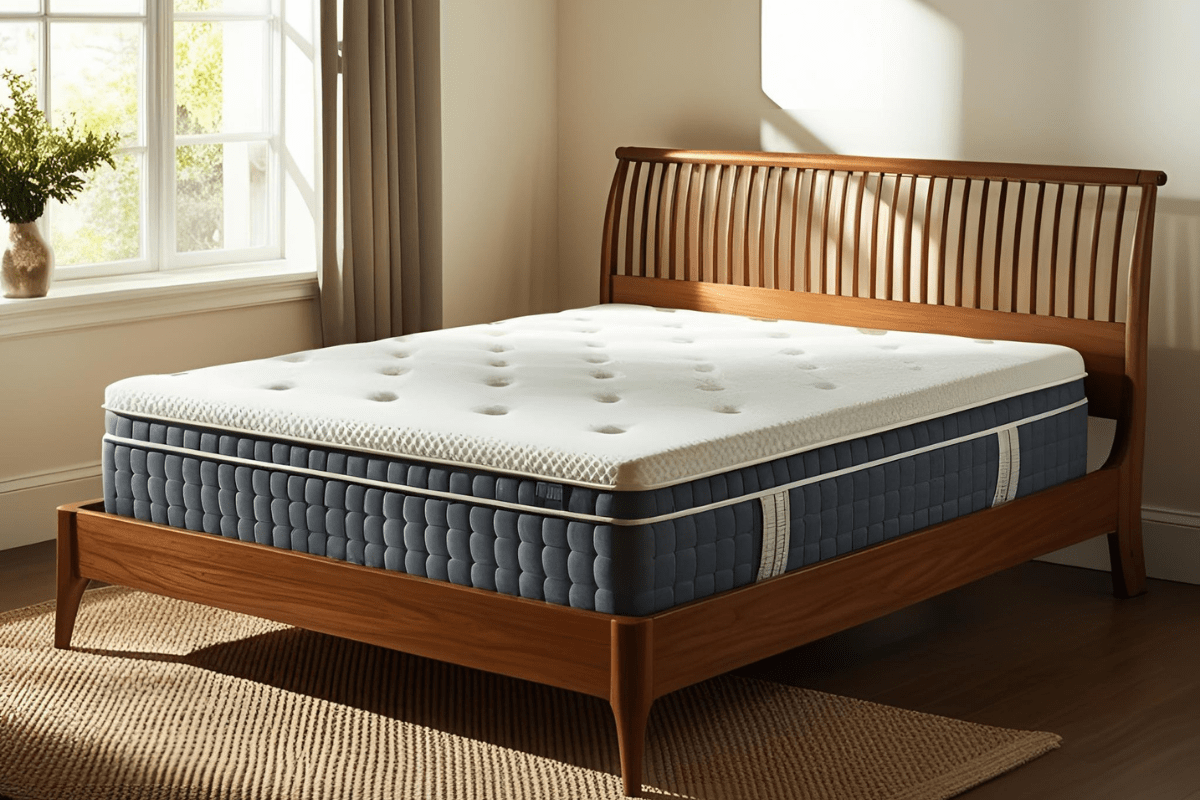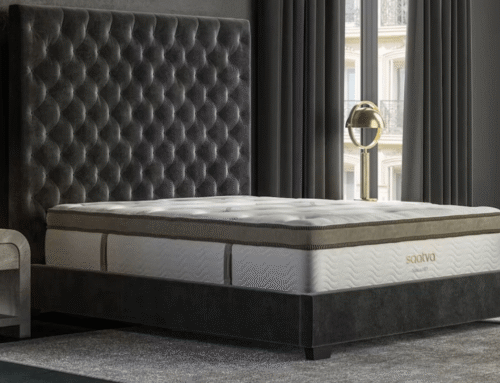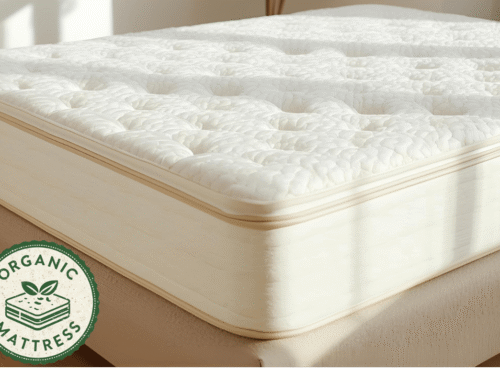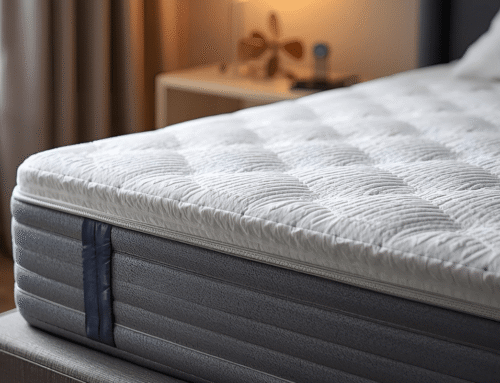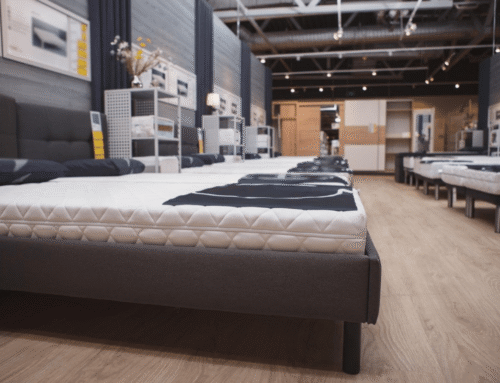Memory foam mattresses come in a wide range of prices, and shoppers often notice big differences depending on the brand and materials. Basic models start at around $200 to $400, which is great for guest rooms or short-term use. More durable mid-range options fall between $500 and $1,000 and often feel more comfortable over time.
Some higher-end memory foam beds go beyond $1,500, especially those using dense foam or adding support zones for pressure relief. Cooling layers and motion-isolating designs also add to the cost. Still, price doesn’t always match quality. Some budget brands feel surprisingly comfortable while expensive ones may not last as long as expected.
It’s also common to find sales that drop prices by hundreds, especially online. People who shop around or try different brands in stores tend to feel more confident about what they’re paying for. Before diving into the details of price ranges, it’s important to understand the difference between a standard memory foam mattress and a gel memory foam mattress, as both types can influence how much you’ll spend.
In the next section, we’ll explore the price ranges more closely and talk about what features seem worth it based on real use.
Key Takeaways
- Mattresses under $700 might feel like a bargain, yet they often wear out quickly, great for guest rooms, though not the best choice for everyday sleep.
- Foam density (4–5 lbs/ft³) reveals more than the brand name does, and higher numbers usually mean better durability and consistent support.
- Mid-range options ($1,000–$1,500) offer a solid balance, as they include upgrades in durability, cooling, and comfort, perfect if you’re looking to get more value for your money.
- Deals under $500 can be tempting, but they often lack, check reviews and foam specifications carefully, or you may end up with early sagging and weak edge support.
- Cooling features like gel-infused foam or breathable covers boost comfort, and they’re especially helpful for hot sleepers, worth the investment for long-term use.

Price Range Breakdown
Price often reflects how a memory foam mattress performs over time. Models in the $400-$700 range usually come with basic foam layers and lighter materials. These beds fit perfectly in a guest room or short-term setup, though they tend to show wear sooner with nightly use.
Around $700-$1000, shoppers will see more balance between cost and comfort. Mattresses in this range often use higher-density foams or blend memory foam with latex or coils. Many of these options last several years without sagging, though not all brands follow through on long-term support.
Some models within this price bracket can feel comfortable at first but might include cheaper support layers underneath. It’s worth looking into what’s inside instead of relying on brand names alone. A good experience usually comes down to foam density, support structure, and how the mattress holds up night after night.
Mid-Range to Premium Options
Mid-range memory foam beds around $1,000 to $1,500 tend to feel noticeably better built. Thicker comfort layers, improved edge support, and soft but durable fabrics are common in this price range. Cooling materials or motion control features sometimes show up here, though not every brand pulls it off well.
Mattresses priced between $1,500 and $2,000 often include more thoughtful design choices. Zoned support and dense foam layers help with body alignment, especially for those dealing with back or joint pain. A few models offer split-firmness setups, which can be helpful for couples with different sleep styles.
Above $2,000, buyers enter the luxury zone, but that doesn’t always guarantee better sleep. Some brands do use organic cotton, advanced cooling gels, and multi-layer foam stacks that feel incredibly plush or firm depending on preference. Still, some options are overpriced for what’s inside, relying more on marketing than real substance.
What Influences The Price?
- Foam Quality and Density: Higher-density memory foam tends to last longer and feel more supportive. Densities above 4 lbs/ft³ often provide a more stable and consistent sleep surface. Lower-density options might break down faster, especially under daily use.
- Construction Complexity: Mattresses with multiple layers or targeted support zones usually come with a higher price tag. These designs can offer a more tailored feel, especially in the lumbar or shoulder areas. The added materials and engineering contribute to the overall cost.
- Brand and Marketing: Premium brands often charge more due to advertising and name recognition. However, some lesser-known companies use similar or better materials for a lower price. It helps to check the specs rather than rely on the logo.
Additional Features: Elements like cooling technology, motion isolation layers, or natural fabrics can increase the price. These features are often appreciated in warmer environments or by light sleepers. The cost reflects the added function and comfort.

Shopping Tips
Foam density gives a good idea of how well a mattress holds up over time. Higher numbers often feel more durable and supportive, while lower ones tend to break down faster. It helps to ask for the actual density, something between 4 to 5 lbs/ft³ usually strikes a good balance.
Certifications clear up a lot of confusion. CertiPUR-US covers the basics like low emissions and safe materials, so it’s a solid place to start. Others like GREENGUARD Gold or OEKO-TEX go further, especially for those who want stricter safety standards.
Big brands don’t always mean better materials. Some smaller companies provide great value and focus more on what’s inside than flashy marketing. The details in the construction matter more than the logo, so it makes sense to check the layers before deciding.
When shopping, it’s also better to think about practical features like the thickness of the memory foam mattress and whether it provides the right balance of comfort and support. Some buyers may prefer a firmer surface or need to adjust firmness levels over time, while others look for ways to keep the mattress cooler, especially in warmer climates. Portability matters too, so knowing how to compress or move a memory foam mattress can make delivery, setup, or future relocation much easier. It’s also worth considering how long a memory foam mattress takes to expand, how to store it, and how to dispose of it.
Cleaning concerns are just as important, especially for households with kids or pets, so it helps to understand how to get urine out of memory foam mattress, how to get stains out of it easily, how to clean it, and how to dry it.
What to Look For in a Memory Foam Mattress
Not all memory foam mattresses have the same quality, so it’s essential to pay close attention to the foam’s density. Higher density foam, around 4 to 5 pounds per cubic foot, tends to hold up better over time and provides more reliable support. Lower density foam might feel soft and cozy at first but usually wears down faster and can develop body impressions sooner than expected.
The thickness of the memory foam layer is also important. A very thick memory foam layer can cause sinking too deep into the mattress, which may affect spinal alignment and lead to discomfort. A balanced design often combines a thinner memory foam layer on top with firmer foams or coils underneath to maintain support while still providing that plush feel.
Durability and maintenance are important when choosing the right mattress. A typical memory foam mattress can last up to 7–10 years, though this depends on usage and quality. It should be rotated regularly to help maintain its shape and comfort over time. Most experts recommend replacing a memory foam mattress when it begins to lose support or sag noticeably. It’s also important to allow the mattress to fully expand for up to 48 hours after unboxing, as using it too early can affect both its structure and comfort in the long run, and over time you may also need to learn how to fix the dip in it.
Price reflects these factors, with higher quality materials generally costing more upfront but lasting longer. Cheaper mattresses might save money initially but can lose their shape and support quickly, which leads to a shorter lifespan. It’s worth considering how much a mattress will hold up over time rather than just the starting cost.
Best Deals on Memory Foam Mattresses
Some online retailers consistently provide better prices than big box stores, especially for memory foam beds. Shoppers who’ve bought direct from brands like Dreamfoam or Bear often say they found great value during seasonal promos. Instead of chasing low prices, it helps to focus on mid-range models with reliable warranties and excellent return policies.
Deals under $500 tend to raise red flags for those who’ve tried budget options and dealt with poor edge support or sagging. A few found that even discounted beds didn’t last beyond two years. Several buyers recommend reading through reviews to spot patterns in comfort, longevity, and customer service rather than focusing only on flashy markdowns.
Not all sales are equal. Some bundles include pillows or bedding, which might sound nice but don’t always add real value. Others have said they’d rather skip the freebies and get a better-built mattress instead. It’s worth checking what’s inside the mattress: things like cooling gel, foam density, and certification often tell more than a price tag ever could.
Cooling Features and Breathability
Memory foam mattresses often carry a reputation for trapping heat, which can make sleeping uncomfortable for those who get warm at night. Features that promote airflow and breathability help reduce this issue and create a cooler sleeping environment. These details matter alongside the price, as some cooling technologies affect the overall cost.
Gel-infused memory foam serves to draw heat away from the body and provide a cooler surface to rest on. This type of foam regulates temperature better than traditional memory foam, although it may add to the mattress’s price point. Open-cell foam technology is also essential in creating tiny air pockets that allow more circulation, which improves comfort without drastically increasing cost.
Mattress covers made from breathable fabrics like organic cotton or bamboo contribute by wicking away moisture and enhancing airflow. These natural materials tend to feel cooler against the skin and complement the foam’s cooling properties. Such breathable covers often appear in mid-range to higher-end models, so budget considerations include these features when deciding how much to invest in a memory foam mattress.
Pros and Cons of Memory Foam
Memory foam mattresses provide strong pressure relief, which benefits side sleepers by easing joint and muscle tension. They also isolate motion well, so partners experience fewer disturbances during the night. The way memory foam molds to the body offers a customized feel that many find comfortable.
On the downside, memory foam traps heat, especially in models without built-in cooling technology, which might cause discomfort for warmer sleepers. Some users find the feel too soft or like sinking too deeply, so it doesn’t suit everyone’s preferences. Additionally, lower-quality memory foam develops permanent body impressions over time and reduces support and comfort.
Regarding cost, memory foam mattresses fall in a mid-range budget compared to other types, depending on thickness and brand. It’s worth noting that added cooling features or higher-density foam raise the price but improve durability and comfort.
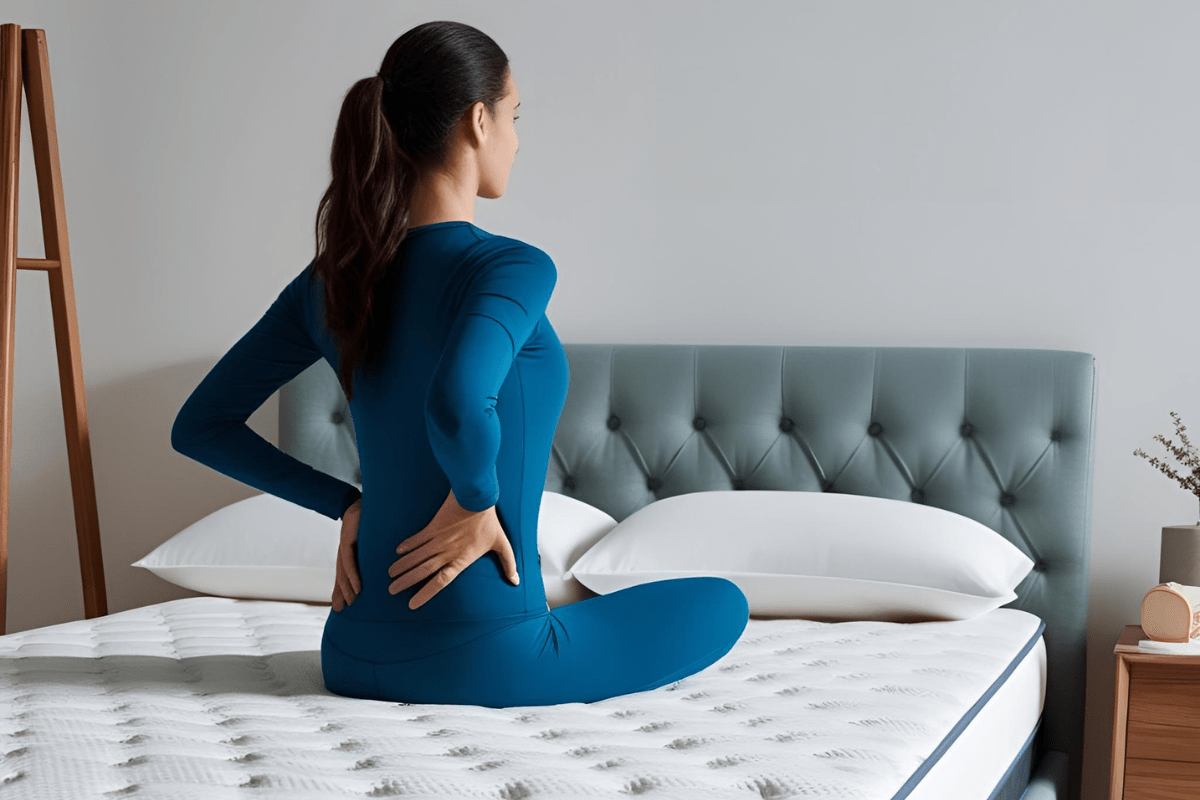
Where to Buy a Memory Foam Mattress
Memory foam mattresses come from several well-known brands that sell directly online, such as Leesa, Puffy, and Saatva. These companies often offer trial periods and competitive prices to allow buyers to test mattresses at home without pressure. Options vary in firmness and construction to suit different sleep preferences.
Local mattress stores provide the opportunity to try mattresses in person and ask questions about materials and support. This approach helps since memory foam feels different depending on density and thickness. Prices in stores may be higher, but the personalized experience guides buyers toward a better fit.
Big box stores like Costco or Walmart sometimes sell memory foam mattresses at discounted prices, but caution is necessary. Some models use lower-quality foams or exclusive house brands. Checking details such as foam density, material composition, and warranty helps determine if the mattress offers good value for the cost.
Final Thoughts
Choosing a memory foam mattress is easier with some knowledge about price, materials, and features. Memory foam mattresses range from around $400 to over $2000, depending on quality and added benefits. High-density foam tends to last longer, so checking the construction details proves important before making a decision.
Cooling properties are important for those who sleep hot, and hybrid options that combine foam with coils offer different levels of support and responsiveness. Exploring various mattress types helps match personal preferences for firmness and comfort.
Comfort and support guide the decision above all else. Some prefer the gentle hug of softer foam, while others choose a firmer feel with more bounce. Taking time to compare options and asking about materials and warranties leads to better sleep without unnecessary stress.

